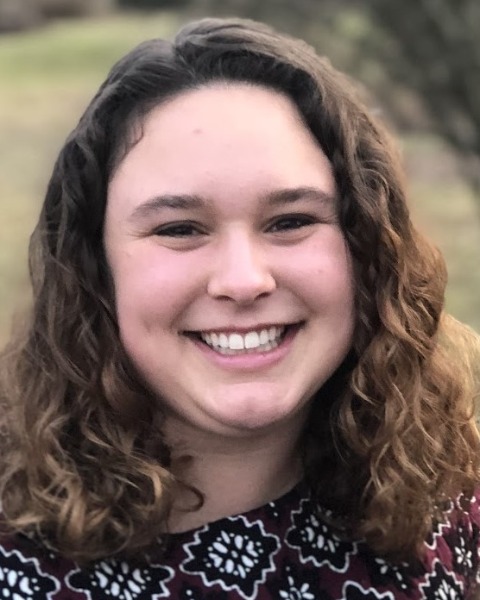Immunoengineering
(J-367) Utilizing lymphatic-based vaccination for antitumoral immunity
- TW
Thomas Wang
Graduate Student
University of Chicago
Chicago, Illinois, United States - JG
Jorge E. Gomez Medellin, PhD (he/him/his)
Postdoctoral scholar
University of Chicago
Chicago, Illinois, United States - KC
Kevin Chang (he/him/his)
Graduate student
University of Chicago, United States - TU
Trevor W.M Ung (he/him/his)
Graduate student
University of Chicago, United States 
Kristen Shema, MS (she/her/hers)
Graduate Student Research Assistant
University of Chicago Pritzker School of Molecular Engineering
Chicago, Illinois, United States- CF
Colleen Foley
Graduate Student
University of Chicago, United States - CG
Camryn Garza
Graduate Student
University of Chicago, United States - JH
Jeffrey Hubbell
Professor
University of Chicago, United States - MS
Melody Swartz
Professor
University of Chicago, United States
Presenting Author(s)
Co-Author(s)
Primary Investigator(s)
Materials and Methods::
B16F10 cells were transduced with a lentivirus to secrete VEGF-C to create B16-VEGFC. B16F10 were transduced with an empty backbone to create B16-CTRL. To engineer B16-CD40L, B16F10 cells were transfected with a plasmid that expresses CD40L utilizing lipofectamine 2000.
In both therapeutic and prophylactic models, the VEGFC Vax scheduling was the same. Mice were vaccinated with 4 million irradiated cells (B16-VEGFC or B16-CTRL) intradermally. Mice were then given imiquimod 4, 6, 8, and 10 days after vaccination on the vax site. Mice received matrix binding αCD40 agonizing antibodies (MB-αCD40)3 intradermally at the vax site 8 and 10 days after vaccination or 1 million irradiated B16-CD40L cells 8 days after vaccination.
In the prophylactic model, mice were challenged with 2-2.5*10^5 B16F10 cells intradermally on the contralateral flank of the vaccine site 17 days after vaccination. In the therapeutic model, mice began vaccination 2 or 4 days after tumor inoculation and were also given αPD-1 intraperitonially 4 times every 3-4 days 6 days after initial vaccination. In the metastatic rechallenge model, mice were given 2*10^5 B16F10 cells intravenously (IV) and sacrificed after 18 days.
For immunological studies, draining lymph nodes, vaccine sites, and spleens were turned into single cell suspension and then used in flow cytometry for characterization or for restimulation where the supernatant is taken for ELISAs. Furthermore, vax sites were homogenized and used for multiplex analysis for cytokines and chemokines. Immunofluorescent staining was used on vax sites to examine the cell population.
Results, Conclusions, and Discussions::
We have previously shown prophylactically and therapeutically that the VEGFC Vax has a significant increase in survival compared to CTRL Vax2. To further explore the VEGFC Vax, we would utilize a “boost” of irradiated B16-CD40L cells instead of MB-αCD40 with the rationale that another dosage of the vaccine with co-stimulatory molecules will lead to a more potent antitumoral response due to more exposure of antigen and prolonged exposure of a CD40 agonist. We would see similar survival compared to VEGFC Vax with αCD40 antibodies in the prophylactic model. These mice would then be rechallenged with an IV injection of 2*10^5 B16F10 cells as a metastasis model. When the vaccine draining lymph nodes were restimulated with Trp2, an immunodominant epitope for B16, we see a near significant increase in IFN-γ production in the group boosted with B16-CD40L compared to the group given MB-αCD40. In addition, we also examine the vaccine site for additional immunological characterization and would find that 12 days after vaccination, there is an increase in CXCL13 production for both CTRL Vax and VEGFC Vax compared to earlier and later days. Through immunofluorescent staining, we also show enrichment of B cells in the VEGFC vax site 12 days after vaccination. We have demonstrated the efficacy of the VEGFC vax when comparing to the CTRL Vax in both therapeutic and prophylactic models. Furthermore, we have demonstrated a proof of concept of utilizing transient transfection of CD40L to further modulate the VEGFC Vax.
The questions of the optimal adjuvants and the mechanism of the vaccine remains. Many adjuvants and co-stimulatory molecules have been tested in both clinical and preclinical setting in whole cell cancer vaccination, indicating many opportunities to investigate in the context of the VEGFC Vax. Because we do see an enrichment of B cells in the vaccine site, we hypothesize tertiary lymphoid structure (TLS) formation may play a role in the efficacy of the vaccine. Because of recent publication highlighting the importance of TLS formation in antitumoral rejection, investigating the role of TLS in the vaccine can further elucidate the mechanism of antitumoral efficacy.
Acknowledgements (Optional): :
References (Optional): :
1. Fankhauser, M. et al. Tumor lymphangiogenesis promotes T cell infiltration and potentiates immunotherapy in melanoma. Sci. Transl. Med. 9, eaal4712 (2017).
2. Sasso, M. S. et al. Lymphangiogenesis-inducing vaccines elicit potent and long-lasting T cell immunity against melanomas. Sci. Adv. 7, eabe4362 (2021).
3. Ishihara, J. et al. Improving Efficacy and Safety of Agonistic Anti-CD40 Antibody Through Extracellular Matrix Affinity. Mol. Cancer Ther. 17, 2399–2411 (2018).
